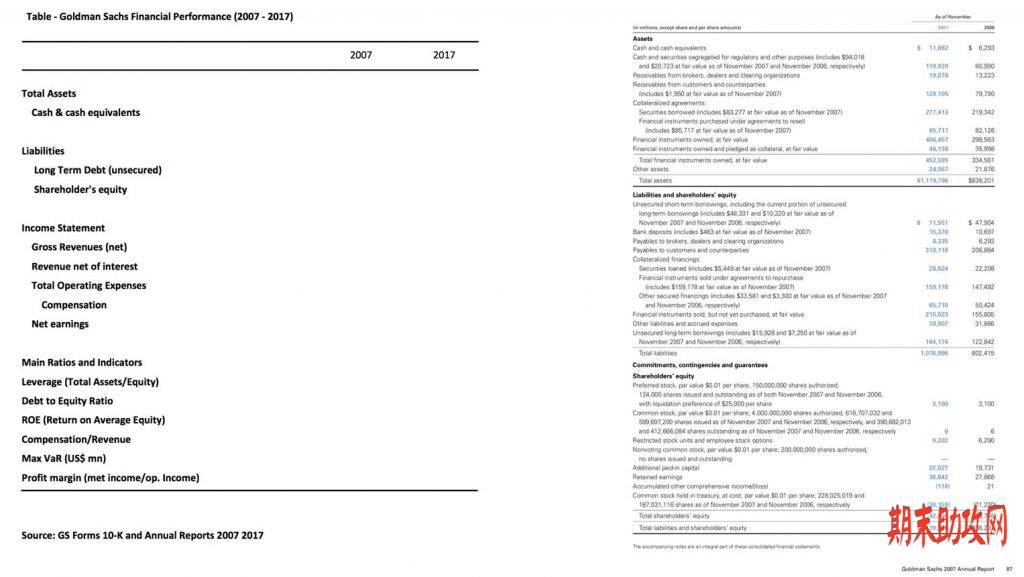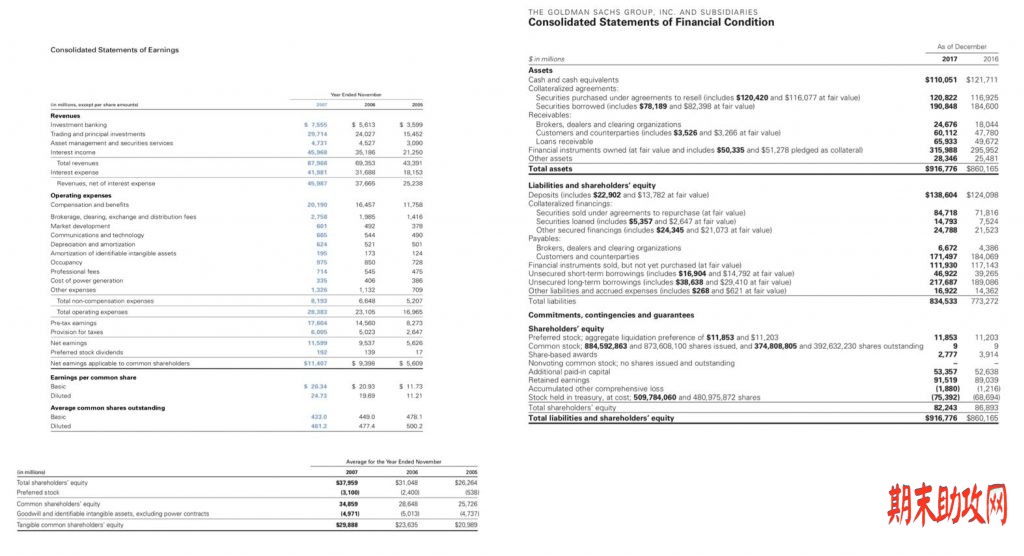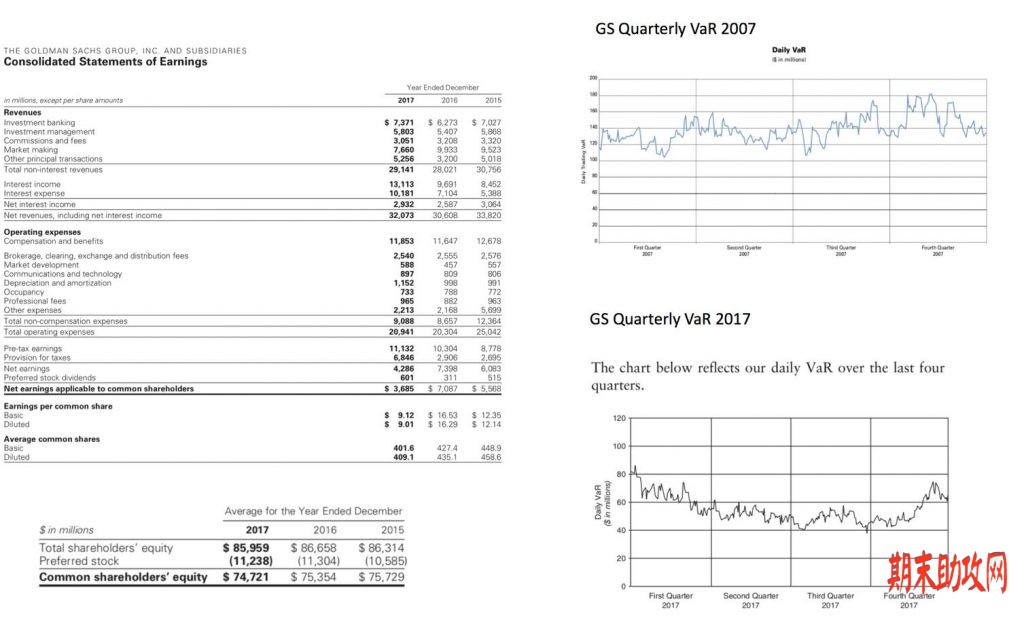摘要:金融assignment代写 What are the effects of lower leverage for an investment bank on its economics (net income) and the return on equity (ROE)?...
金融assignment代写-代写finance-代写金融学
Background
Prior to the Lehman crisis of 2008, investment banks had larger balance sheets and used more leverage. After the crisis, changes in regulation and in the industry’s competitive landscape changed the investment bank’s balance sheets. The purpose of this Case 2 is to understand what were the effects of the crisis on Goldman Sachs’ balance sheet.
Compare the balance sheets for Goldman Sachs (source: Annual Reports and Form 10-K for 2007 and 2017, GS).
1.Just by glancing the balance sheets for 2007 and 2017, what are the most striking changes for GS? 金融assignment代写
2.Looking at the liability side of GS’ balance sheet:
(a) what happened to bank deposits held by GS between 2007 – 2017?
(b) What were the main regulatory and strategic reasons for changes in deposits?
(c) What are the advantages and disadvantages for GS of relying more or less on deposits?
Calculate the debt ratios for GS for 2007 and 2017. Define the debt ratio (D) as the stock of long-term unsecured debt (LTu) divided by shareholder’s equity (E).
Calculate the leverage ratios for GS for 2007 and 2017. Define the leverage ratio (L) as being total assets (A) divided by shareholder’s equity (E). This measure of leverage is the Equity Multiplier. 金融assignment代写
(a) Explain the changes in the debt and leverage ratios between both years
(b) Explain the regulatory reasons for such a large change in leverage?
(d) From the point of view of the Federal Reserve and other regulators, would this change in leverage make the systemically important financial institutions like GS safer or riskier?
(e) What are the effects of lower leverage for an investment bank on its economics (net income) and the return on equity (ROE)?
(d) In order to deliver high ROEs, what would GS’ management have to in order to maintain profitability in light lower leverage?

Compare the size of GS’ investment portfolios between 2007 and 2017? 金融assignment代写
(a) What are the reasons for such change?
(b) How would these changes affect GS’ profitability and its ability to make markets and provide liquidity?
(c) In which way would the changes in the size of inventories of securities carried by investment banks affect bid-ask spreads in the market; and the financial markets’ resilience (defined by asset price volatility and ability to offload positions) to financial shocks (that make the markets go “risk off”)? 金融assignment代写
Value at Risk is one of the measures available to management to estimate the potential loss in one day at a certain confidence level (usually 99% or 95%).
(a) Inspecting the quarterly charts for VaR, what can you say about the level of risk-taking before (2007) and after the crisis (2017)?
(b) What regulatory changes were responsible for such a large change in risk-taking behaviour
(c) What were the other factors that reduced risk-taking and VaR?

金融assignment代写


24小时在线客服 微信同QQ:321652919



